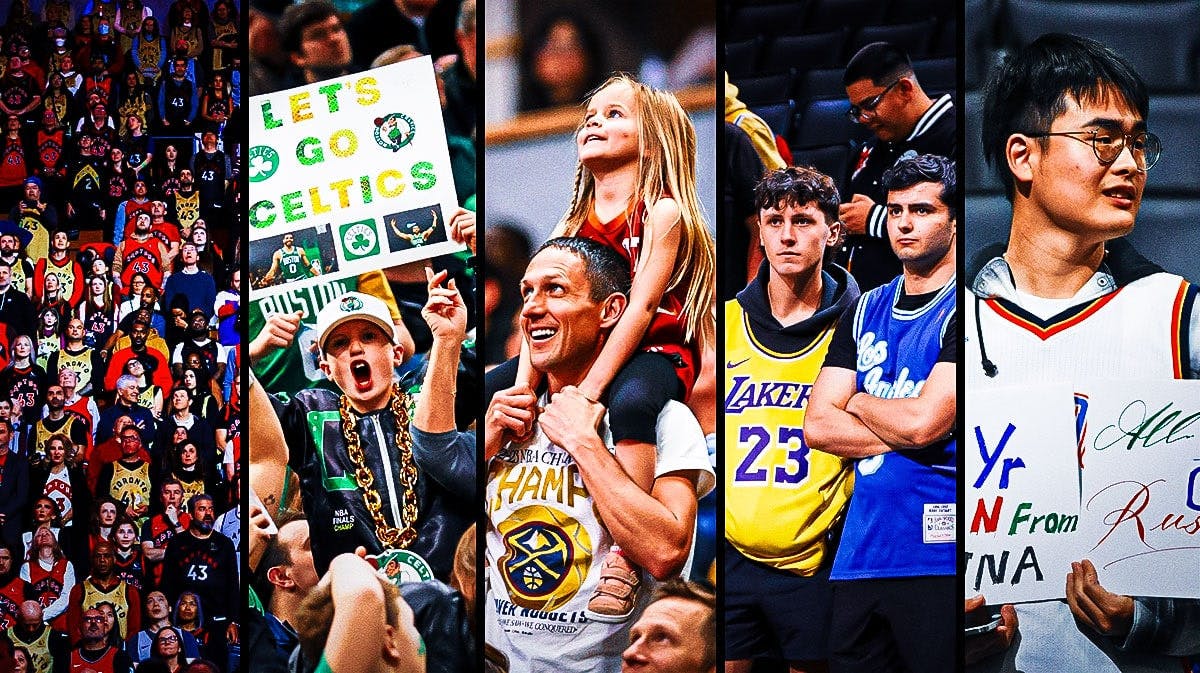If you're a lifelong fan of the National Basketball Association — not just the game of basketball, but specifically the NBA — then there's no other way around it: the 2023-24 season was a tremendous success. The old guard of superstars (LeBron James, Kevin Durant, Stephen Curry, etc.) is still hanging around and competing for All-NBA nods. The new generation (Anthony Edwards, Devin Booker, Jalen Brunson, Jayson Tatum, etc.) is coming on strong and looking to make a big splash in the postseason. And never before has there as many dominant and entertaining internationally born players (Nikola Jokic, Giannis Antetokounmpo, Joel Embiid, Luka Doncic, Shai Gilgeous-Alexander, Victor Wembanyama, etc.) that are surely contributing to the expanding popularity of the league around the world.
But right here in the United States, many metrics show that this beautiful game is seeing a rise in interest, and perhaps the most telling piece of information supporting this notion came from the NBA itself today.
“The NBA set all-time records for regular-season total attendance, average attendance, percentage of capacity and sellouts for the second season in a row,” according to a press release from NBA Communications. “The total attendance of 22,536,341 in the 2023-24 regular season surpasses the previous record of 22,234,502 set last season. The other records include 872 sellouts (up from the previous record 791 in 2022-23), 71% of games sold out (up from 63% in 2022-23) and an average attendance of 18,322 (up from 18,077 in 2022-23). Additionally, NBA arenas were filled to an all-time-high 98% capacity.”
The release went on to note that there were ten teams (Boston, Cleveland, Dallas, Denver, Golden State, Miami, Minnesota, Philadelphia, Phoenix and Sacramento) that sold out every one of their homes games. But it turns out, the NBA is not just enjoying an increase in the number of fans in arenas. Across multiple platforms, the NBA is seeing a rise in popularity.
“According to the Nielsen Station Index — which measures the audience for 27 NBA teams across 25 local U.S. markets — 18 franchises had increased their linear TV viewership year-to-year through the same amount of games (through Feb. 6),” according to Tom Friend of the Sports Business Journal. The fact that two-thirds of the league saw an increase in TV viewership from one year to the next is an anomaly, as Playfly Sports President Craig Sloan pointed out.
“Twice as many teams are up in NBA over being down. That's not normally the case. It should be 50-50 — somebody's winning, somebody's losing. Usually, interest will wane in markets where a team's losing, and the others will go up. But having two-thirds of your teams in a positive growth is a good story. … If you look at it, the local market part of the ecosystem is really strong.’’
And it's not just local markets that are seeing an increase in viewership. On National TV broadcasts of regular season games across all networks (ESPN, TNT, NBA TV), viewership is up from last season. Even All-Star Saturday Night and the widely-panned NBA All-Star Game saw notable increases in viewership.
What this means for the NBA is that a nice, big, tasty new media rights deal that will be inked sometime over the summer is about to be served up on a silver platter. As of early March, Tom Friend of the Sports Business Journal suggested, “NBA team execs believe a final overall NBA media rights deal will be worth between $60 and $72B — 2.5 to 3 times larger than its previous arrangement in 2014.”
All of this is good news for the National Basketball Association.












